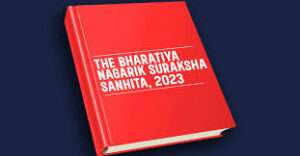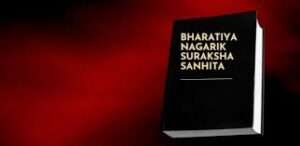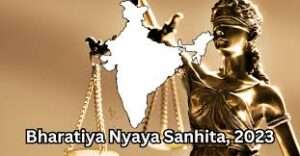
Section 153: Exclusion of evidence to contradict answers to questions testing veracity.
When a witness has been asked and has answered any question which is relevant to the inquiry only in so far as it tends to shake his credit by injuring his character, no evidence shall be given to contradict him; but, if he answers falsely, he may after wards be charged with giving false evidence.
Exception 1. — If a witness is asked whether he has been previously convicted of any crime and denies it, evidence may be given of his previous conviction.
Exception 2. — If a witness is asked any question tending to impeach his impartiality and answers it by denying the facts suggested, he may be contradicted.
Illustrations
(a) A claim against an underwriter is resisted on the ground of fraud.
The claimant is asked whether, in a former transaction, he had not made a fraudulent claim. He denies it.
Evidence is offered to show that he did make such a claim.
The evidence is inadmissible
(b) A witness is asked whether he was not dismissed from a situation for dishonesty.
He denies it.
Evidence is offered to show that he was dismissed for dishonesty.
The evidence is not admissible.
(c) A affirms that on a certain day he saw B at Lahore.
A is asked whether he himself was not on that day at Calcutta. He denies it.
Meaning
Section 153 of the Indian Evidence Act, 1872, is a crucial provision governing the cross-examination of a witness regarding their prior statements. This section holds significance in ensuring the fairness and reliability of evidence presented in courts across India.
Understanding Section 153:
Section 153 deals specifically with the impeachment of a witness’s credibility by contradictory statements. It allows an adverse party to cross-examine a witness about previous statements made by that witness which are inconsistent with their current testimony. The objective is to test the veracity of the witness’s statements and to expose any discrepancies or falsehoods.
Howdy, you all! Welcome to your page of knowledge. You will find different legal blogs, the latest news, current affairs, and many more on this channel. This is the initiative to develop the knowledge of the law in the world, especially for you.
Key Elements of Section 153:
- Statement in Writing or Oral: The section applies to both written and oral statements made by the witness at any time prior to their current testimony. This includes statements made during investigations, police interviews, or any other formal proceedings.
- Inconsistency in Statements: It permits the cross-examination of a witness concerning any previous statement that is inconsistent with their current testimony. The contradiction can relate to material facts or points that are relevant to the case.
- Purpose of Cross-Examination: The primary objective is to challenge the credibility of the witness and expose any possible inconsistencies or contradictions in their statements. This is crucial for ascertaining the truth and ensuring a fair trial.
Implications and Importance:
Ensuring Credibility:
Section 153 plays a pivotal role in maintaining the credibility of witness testimony. By allowing cross-examination regarding prior statements, it enables the court to evaluate the consistency and reliability of the witness’s account. This process helps in separating truth from falsehood and prevents witnesses from changing their statements to favor a particular party.
Uncovering Discrepancies:
Inconsistent statements may indicate dishonesty, a lack of reliability, or even coercion. Cross-examination under Section 153 allows legal representatives to highlight any contradictions, providing the court with a clearer understanding of the witness’s trustworthiness and the actual events in question.
Upholding Fairness and Justice:
By permitting the cross-examination of witnesses based on prior statements, Section 153 contributes significantly to the principles of fairness and justice. It ensures that all parties involved have the opportunity to challenge the testimony presented and helps prevent miscarriages of justice resulting from unreliable or false statements.
Challenges and Controversies:
Despite its importance, Section 153 can present challenges. For instance, the interpretation of what constitutes inconsistency or how substantial the discrepancy must be to affect the witness’s credibility might vary. Additionally, there could be instances where a witness genuinely made an error or discrepancy due to memory lapses rather than intentional deceit.
Case Laws
Several landmark cases have helped shape the interpretation and application of Section 153 of the Indian Evidence Act, setting precedents for cross-examination based on prior inconsistent statements:
1. State of U.P. v. Nahar Singh:
In this case, the Supreme Court held that when a witness makes contradictory statements during trial compared to their earlier statements recorded under Section 161 of the Criminal Procedure Code (CrPC), it is permissible to cross-examine the witness regarding the inconsistency. This decision reaffirmed the importance of Section 153 in impeaching a witness’s credibility based on prior contradictory statements.
2. Pakala Narayana Swami v. Emperor:
The court emphasized that the provisions under Section 145 of the Indian Evidence Act allow the cross-examination of a witness about previous statements, whether oral or written, to challenge their credibility. The case highlighted the significance of consistency in witness testimony and the admissibility of prior inconsistent statements for cross-examination.
3. Rameshwar S/o Kalyan Singh v. State of Rajasthan:
This case reiterates that the purpose of cross-examination under Section 153 is to test the veracity and credibility of a witness. It emphasizes that prior inconsistent statements can be used to impeach the credibility of a witness, and such cross-examination is a valuable tool in the quest for justice.
4. Harikrishna Kandara v. State of Rajasthan:
The Supreme Court held that while minor contradictions or omissions in statements might not affect the credibility of a witness, substantial contradictions that go to the root of the case can be used for cross-examination under Section 153. This case highlighted the significance of distinguishing between minor inconsistencies and those that are material to the case.
5. Shyam Singh v. State of Uttar Pradesh:
This case reaffirmed the admissibility of prior inconsistent statements recorded under Section 161 of CrPC for cross-examination under Section 153. It emphasized that such contradictions can be used to discredit the testimony of a witness and are crucial for a fair trial.
Two notable exceptions provided under the section
Under Section 153 of the Indian Evidence Act, while it allows for cross-examination of a witness based on their prior inconsistent statements, there are exceptions to when this may not be permitted. Two notable exceptions include:
1. TRUTHFUL EXPLANATION:
If the witness can provide a satisfactory explanation for the inconsistency between their current testimony and their prior statement, the cross-examination may not be allowed under Section 153.
Example: Let’s consider a witness who initially gave a statement to the police that differed from their testimony in court. If the witness can convincingly explain that the earlier statement was made under duress or confusion and that their court testimony reflects the accurate version of events, the court might not allow cross-examination solely based on the inconsistency.
2. TRIFLING INCONSISTENCIES:
Not all inconsistencies in prior statements are substantial enough to warrant cross-examination under Section 153. Trifling or minor contradictions that do not affect the core elements of the case might not be considered grounds for cross-examination.
Example: If a witness gave slightly different descriptions of events in two separate statements but these discrepancies are inconsequential to the main facts of the case, the court might consider these as trifling inconsistencies and not allow cross-examination based solely on these minor differences.
Importance of Exceptions:
These exceptions are crucial in ensuring fairness in the application of Section 153. They prevent the misuse of minor contradictions or situations where a witness may have genuine reasons for inconsistencies that do not undermine their overall credibility.
Judicial Interpretation:
The determination of whether an inconsistency falls under these exceptions often relies on judicial discretion. Courts consider the nature and significance of the inconsistencies and the witness’s explanation, if any, to decide whether cross-examination under Section 153 is warranted.
Significance for Fair Trials:
These exceptions aim to balance the need to ascertain the truth with protecting witnesses from unfair or unnecessary cross-examination. They emphasize the importance of distinguishing between substantial contradictions impacting credibility and minor discrepancies that might not affect the essence of the case.
Understanding these exceptions is crucial for legal practitioners, as it allows them to navigate the complexities of witness cross-examination effectively, ensuring that the pursuit of truth remains aligned with principles of fairness and justice in the legal system.
Conclusion:
Section 153 of the Indian Evidence Act serves as a critical tool in the judicial system to ascertain the truthfulness and reliability of witness testimony. By allowing for cross-examination regarding prior inconsistent statements, it plays a vital role in upholding the principles of fairness, justice, and the search for truth within the Indian legal framework.
LegalOnus
Aequitas Sequitur Legem
- Business Law
- Case Law
- Civil Law
- Constitutional Law
- Consumer Protection
- Criminal Law
- Current Affairs
- Current legal issues
- Environmental Law
- Intellectual Property
- Legal Facts
- Legal News
- Uncategorized
- HISTORY & EVOLUTION OF LAWS OF PREVENTIVE DETENTION IN INDIA
- JUDGEMENT PROCEDURES IN THE BHARATIYA NAGARIK SURAKSHA SANHITA
- Understanding Section 187 of the Bharatiya Nagrik Suraksha Sanhita (BNSS), 2023: A Comparison with CrPC
- What are keys changes introduced in BHARTIYA NYAYA SAHITA 2023
- An Analysis of Chapter IX of the Bharatiya Nyaya Sanhita, 2023: Of Offences Relating to Elections






